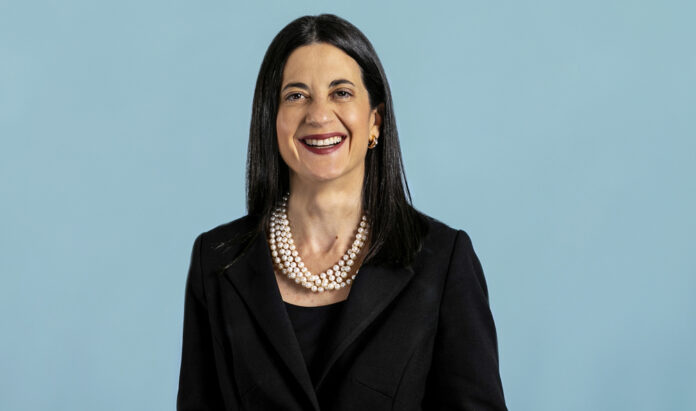From the age of 16, I wanted to be a family law Barrister. I was never a quiet individual, and I concluded it would be ideal to be paid to argue and help families along the way. I studied Politics and Theology at Bristol University, followed by the Law Conversion course at City University. I obtained pupillage when I was on the Law Conversion, and then went on to Bar School at the Inns of Court School of Law. Neither of my parents were lawyers or even went to University. I funded the Law Conversion and Bar School through a mixture of scholarships from Middle Temple and bank loans, and I also received assistance from the Barrister’s Benevolent Association during pupillage. I started in pupillage at the age of 23. I was very keen to have an international children law practice before I even obtained pupillage, having studied at the Hague Academy of International law and worked at the International Child Abduction and Contact Unit on a pro bono basis during my year at Bar School. I was thrilled when I obtained pupillage at Renaissance Chambers, a specialist family law chambers, which had a particular reputation for international children law work given its illustrious co-head of chambers, Henry Setright KC. My pupillage was focused on children law work, and I was fortunate to have the fabulous Teertha Gupta KC as a pupil supervisor with whom I spent a lot of time learning about international children law.
When I started on my feet I undertook publicly funded work only. In those days, there was far less privately funded children work than there is these days, and that work was mainly given to senior practitioners. I spent my time applying for non-molestation orders and advising parents in fairly routine child arrangement disputes. When I obtained tenancy, I started to try and get my foot in the door in relation to international work. This was not an easy process as the area was dominated by a few specialist solicitors and barristers, but I was determined! Quite early on, I was given the opportunity to represent a father in Hague Convention 1980 proceedings. He had very little money, but a very good case as the child aged 13 objected to a return to Brazil. I was against David Williams, now Mr Justice Williams, who is a good friend and mentor to me, but at the time was a daunting opponent. Happily I went on to win the case. Around this time, I also moved chambers to 4PB (4 Paper Buildings at the time) as the most junior member of the international team who moved from Renaissance chambers. My move to 4PB accelerated the progression of my international practice as the chambers had a formidable reputation in this field. Initially, I relied on senior members of chambers who would kindly gave me their ex parte applications, on the basis they would then do the rest of the case. I spent many days running back and forth to the High Court and got to know the High Court Tipstaff very well! After some time, I became better known to the specialist abduction solicitors and they started to give me my own cases. It was usual for me to undertake multiple cases a day, often in the urgent Applications Court. This allowed me to gain considerable experience of the work, and build up my reputation with the High Court judges who presided over the cases. Those days were enormous fun, and very professionally satisfying. The stakes in these cases were always very high (normally a binary decision as to whether an abducted child was returned or not), and there were seemingly endless point of law to consider and develop. The jurisprudence in this field was rapidly developing around this time. I was fortunate to be involved in many cases which helped develop the jurisprudence, including 6 cases before the UK Supreme Court. In one case, I represented a 13 year old child in the UK Supreme Court and changed the law as regards the importance of hearing the voice of the child when assessing habitual residence: Re LC (Reunite: International Child Abduction Centre Intervening) [2014] UKSC 1. Other highlights included making oral submissions to the Court of Justice of the European Union in the case of UD x XB [2019] 1 FLR 289 as regards the necessity of physical presence as a pre-requisite for the establishment of habitual residence.
I aspired to undertake some privately funded work, and it took some time for that side of my practice to develop. One of my early private briefs was representing Madonna in her Hague Convention 1980 proceedings, which was an exciting brief, and culminated in 2 reported decisions: Ciccone v Ritchie (No 1) [2017] 1 FLR 795 and Ciccone v Ritchie (No 2) [2017] 1 FLR 812. Over the years, and as I have become more senior, my practice has transformed into one that is predominantly privately funded work. My case load is now a mix of chid abduction, jurisdictional arguments, relocation cases and high conflict private children disputes. I have though maintained my commitment to publicly funded and pro bono work. I recently represented a biological mother in the Court of Appeal on a pro bono case, in what is now the leading case on the interpretation of section 2A of Family Law Act 1996: Re S (Children: Parentage and Jurisdiction) [2024] 1 FLR 830). I took silk this year, and hope that this elevation will lead to more complex and challenging cases.
In between all of this work, I have had two amazing girls, who are now aged 6 and 3. I had an established practice prior to the start of my first maternity leave, and I think that this assisted in ensuring that my practice remained intact, coupled with some diligent marketing when I returned from leave. I did also take relatively short maternity leaves out of choice (about 4 ½ months each time), which somewhat lessened the financial impact of maternity leave, albeit there was still a considerable impact. I am also very fortunate that I have been hugely supported at home, by my amazing and long suffering husband, Leonard and at work, by my wonderful senior clerk, Michael Reeves. This support has helped ensure that the endless juggle of work and home life has been relatively easy, albeit there have still been some challenging days where the juggle seemed nearly impossible!
In terms of the decision as to when to apply for silk, that was definitely impacted by the fact that I had given birth twice. There were male counterparts who applied sooner than me. At times, it was difficult not to feel that I was ‘falling behind’ as a woman, but ultimately I concluded that it is important to do things in your own time and when you feel comfortable, as is the case (or at least should be) with every choice one makes in life. I am very glad that I applied when I did, and I would urge anyone thinking of applying to really ignore all the ‘noise’ around them and focus solely on what is best for them, both personally and professionally. The process of applying for silk is gruelling, but I think it is made easier if it truly is the right timing for you and your practice. I would also encourage those thinking of applying, or going through the application process, to be open about it with those around you who you trust as I gained a lot of strength from the support and advice I received from friends in chambers who had already gone through the process.
I am pleased to say that my experience of being a woman at the Bar has been largely positive. However, I am acutely conscious and saddened that this is not the case for all women. I think that things have definitely improved since I started back in 2007, as a result of there being a far more open dialogue about equality and diversity. However, there are more strides that need to be made. It is disheartening that only about 20% of women take silk, as compared to their male counterparts, given that the statistics demonstrate that there are more women than men obtaining pupillage (about 60%). One of the most important things that women at the Bar need is mentorship; people at the top of the ‘ladder who will help them on their journey to the top. That mentorship can come in the form of women supporting women, but we also need men at the top (of which there are still far more) to support women, understand the specific challenges that women face and help them combat those challenges. It is also vital that all Chambers look inwards and really consider if their policies are truly complaint with the equality rules that are mandatory in the BSB handbook, and whether their culture (a less tangible but equally important issue) is inspiring women to reach for the stars. I hope that the progress which has been made will continue, and that in time true equality will be achieved.
Jacqueline Renton KC, Barrister at 4PB





